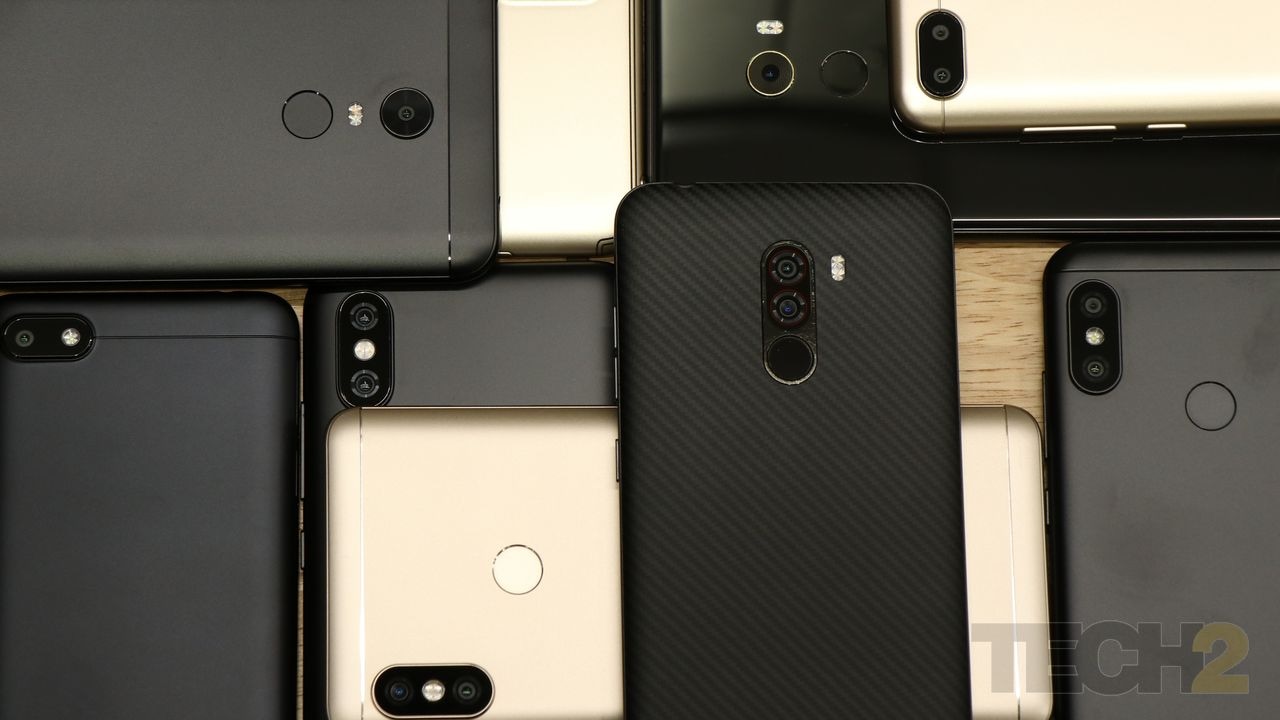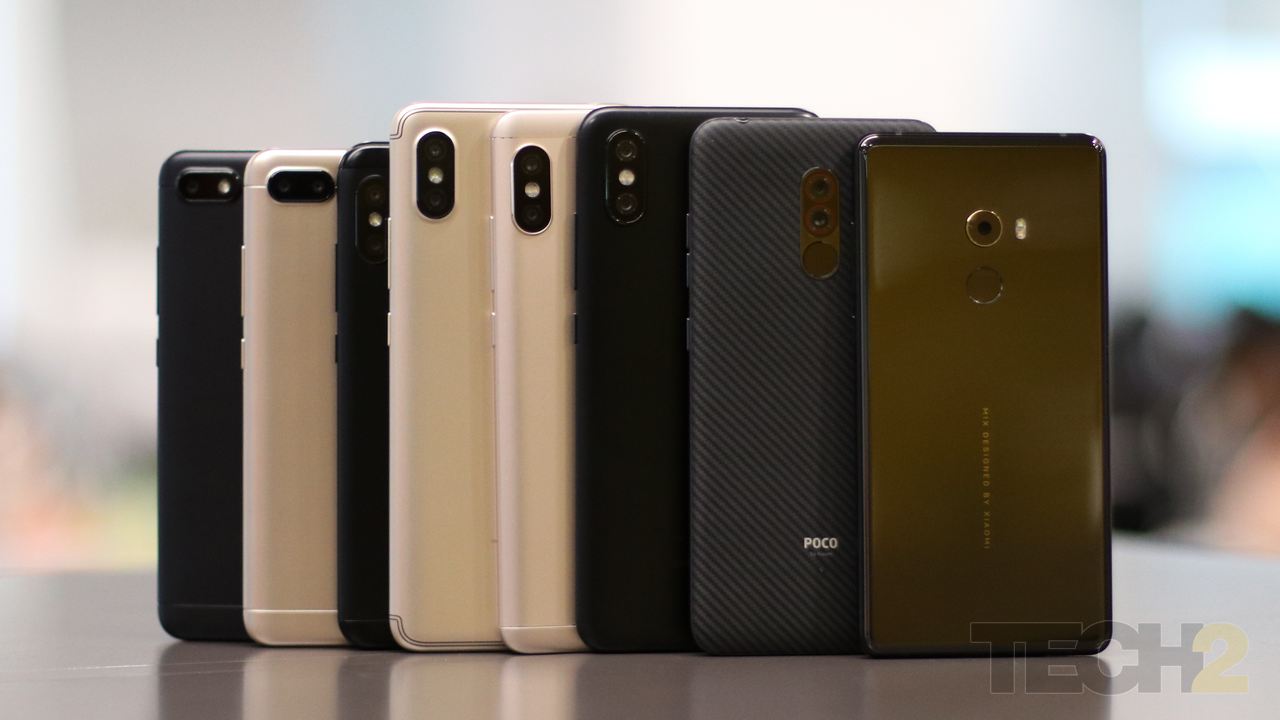From a relatively popular smartphone brand operating in China, in just 5 years Xiaomi has come a long way to launching smartphones marketed as ‘Desh ka smartphone’ in India. Xiaomi had to literally break the ice and then gain the trust of Indian audiences, which wasn’t easy considering that the brand originates from China. As with all Xiaomi smartphones shipped till date it’s the pricing that attracts customers to the smartphone brand. Offering unbeatable value for money has been the Xiaomi philosophy and this has worked well for the rather price conscious Indian market. While Motorola with its G series introduced the flash sales model, Xiaomi revolutionised it in India, which also helped build the hype around the brand. While this worked well for the marketing the brand initially, Xiaomi discovered that it needed to sell smartphones on open sale and offline and that not all customers would be ready to wait in virtual queues to purchase a smartphone when one could purchase a Samsung device up front at a brick and mortar store. [caption id=“attachment_5215931” align=“alignnone” width=“1024”] Xiaomi. Image: tech2/ Prannoy Palav[/caption] As the brand stands today, the latest IDC report shows Xiaomi as the fastest growing smartphone brand in the country, more so after it recently dethroned Samsung, which was at the very top for a really long time. Xiaomi’s current strategy as per the IDC report showcases its aggressive stance against Samsung in India, with cut-throat pricing, up to date hardware and polished devices that Samsung simply cannot seem to match. Xiaomi even joined the Android One program to silence critics who somehow did not like the idea of a skinned mobile OS (MIUI). Constantly upgrading its range of devices with the latest hardware from Qualcomm (and MediaTek) made it hard for local smartphone brands to survive and today, we barely hear from the Micromax, Karbonn and Lava trio. Xiaomi overcame its flash sales model and now even has partnered retail stores and even their own Mi Home physical stores that let customers experience their devices before purchasing them. In case you didn’t know it, Xiaomi is a comprehensive products company in its home country China. They build and sell everything from computer mice, weighing scale, smart TVs, laptops, air purifiers, electric cycles, backpacks, ball-point pens, sports shoes and mobile phone accessories. In India, Xiaomi has also stepped into appliances segment by launching Mi TVs and air purifiers. In short, Xiaomi knows where it’s headed, knows what its customers want and what it wants to achieve. And that’s a good spot to be in 2018 where most smartphone brands are confused at best in an industry that seems lack of innovation. But now, let’s talk smartphones! And believe it or not, Xiami sells 20 smartphones under the Redmi, Mi and Poco brands.
What’s the difference between a Mi phone, a Redmi phone and a Poco phone?
If you have ever been confused about what these smartphone brands from Xiaomi mean, let me simplify things for you! [caption id=“attachment_5215921” align=“alignnone” width=“1280”] Xiaomi. Image: tech2/ Prannoy Palav[/caption] Mi Phones Mi phones consist of Xiaomi’s premium smartphones. These devices will usually be slimmer, modern-looking and will always be constructed out of metal to deliver that premium look and feel. They will also pack in the latest hardware and will be the only devices to feature a USB Type-C port. Xiaomi’s current range of Mi devices includes the premium Mi Mix 2, the Mi A2 (the successor to the Mi A1) and the Mi Max 2 (which should hopefully see a successor soon in Mi Max 3). Redmi Phones Redmi phones usually consist of value for money devices from Xiaomi. These are the brand’s bread and butter and usually make up all those big sales figures that you hear about when Xiaomi breaks sales records. Currently, the Redmi range, includes the Redmi Note 5 Pro, the Redmi Note 5, the Redmi 6 Pro, the Redmi 6, Redmi 6A and the Redmi Y2. POCO Last but definitely not the least, is another recently launched sub-brand by Xiaomi called Poco. Poco is a performance-oriented brand that seems to be a successful blend of the Mi and the Redmi lineup. Poco’s first smartphone called the F1, delivers top notch hardware specifications in a well-assembled package that is priced at Rs 20,999. The Poco F1 at launch became the only mid-range device to feature a top-of-the-line Qualcomm Snapdragon 845 SoC (usually found in premium smartphones upwards of Rs 35,000) in the Rs 20,000 price range. And by now, you must have figured out how confusing Xiaomi’s product strategy seems to be with devices like the Poco F1 cannibalising the premium Mi Mix 2 and even the Mi A2 to an extent. Well, let’s break things down and help you decide on your next Xiaomi smartphone purchase! MIUI and Mi Fans Powering most of the above devices is Xiaomi’s proprietary MIUI.
**MIUI is in it's 10th version** and is a clever and highly customisable (
**though loaded with ads** ) skin on top of Google’s Android operating system. It has had a tough time keeping up with Android’s latest versions and Mi forums are full of comments complaining about the same. But one thing is for sure, no other brand has been able to build a tightly knit community like Xiaomi. Mi Fans as they are proudly called, get front row seats at latest product launches, are featured in prominent marketing efforts.
Which Xiaomi smartphone is best for me?
Price range: Rs 5,999 to Rs 7,999 (entry-level) Recommended smartphone: Xiaomi Redmi 6
| Smartphone model | Price (Rs) | Display (inches) | SoC | RAM | Storage | Battery (mAh) | Colours |
|---|---|---|---|---|---|---|---|
| Redmi 6A | 5,999 | 5.45 | MediaTek Helio A22 | 2 GB | 16 GB | 3,000 | black, blue, gold, Rose Gold |
| Redmi 6A | 6,999 | 5.45 | MediaTek Helio A22 | 2 GB | 32 GB | 3,000 | black, blue, gold, Rose Gold |
| Redmi 6 | 7,999 | 5.45 | MediaTek Helio P22 | 3 GB | 32 GB | 3,000 | black, blue, gold, Rose Gold |
For those who are on a tight budget or are just stepping into the world of smartphones, the Redmi 6A at Rs 5,999 makes for a great budget-friendly buy considering what you get for the asking price. We would still recommend stretching your budget by a little and getting the 32 GB model, so that you will have more space for all those “Good Morning” WhatsApp messages that you will be flooded with. 16 GB of storage sounds fair when you get expandable storage up to 256 GB (using a microSD card) and it sounds even better when that memory card goes into a third card slot letting you add two SIM cards and enjoy expandable storage. [caption id=“attachment_5215901” align=“alignnone” width=“1280”] The Xiaomi Redmi 6A, Redmi 6 and the Redmi 6 Pro. Image: tech2/ Prannoy Palav[/caption] Sadly, not all third-party app developers will let you run your apps off your SD card. This means that your internal storage will fill up soon enough. So it’s wise to spend Rs 1,000 more and buy the Redmi 6A with 32 GB of storage inside. The best purchase decision here would be to go in for the Redmi 6 (a level up) making your first smartphone purchase future-proof with 3 GB RAM, 32 GB storage, dual cameras and a fingerprint reader at back, all at just Rs 2,000 more.
Price range: Rs 8,000 to Rs 9,999 (budget) Recommended smartphone: Xiaomi Redmi Note 5
| Smartphone model | Price (Rs) | Display (inches) | SoC | RAM | Storage | Battery (mAh) | Colours |
|---|---|---|---|---|---|---|---|
| Redmi 6 | 9,499 | 5.45 | MediaTek Helio P22 | 4 GB | 64 GB | 3,000 | black, blue, gold, Rose Gold |
| Redmi Note 5 | 9,999 | 5.99 | Qualcomm Snapdragon 625 | 3 GB | 32 GB | 4,000 | black, blue, gold, Rose Gold |
| Redmi Y2 | 9,999 | 5.99 | Qualcomm Snapdragon 625 | 3 GB | 32 GB | 3,080 | Dark Grey, gold, Rose Gold |
It is the most talked about smartphone segment among smartphone buyers, because it offers robust, future-proof devices at cut-throat pricing. If you are looking for a Xiaomi smartphone in this price range, you will be scratching your head over which smartphone is the best for you. [caption id=“attachment_5215911” align=“alignnone” width=“1280”] The Xiaomi Redmi Note 5, Redmi Y2, and the Redmi 6. Image: tech2/Prannoy Palav[/caption] For battery life: Those looking for great battery life will find the Redmi Note 5 (3 GB RAM) model and the Redmi 6 a good choice. While the Redmi Note 5 offers a bigger 4,000 mAh battery it is paired with a rather tried and tested Qualcomm Snapdragon 625 built using the 14 nm process. The new MediaTek Helio P22 clocked at 2 GHz is built using the 12 nm process in the Redmi 6 should deliver when it comes to battery life despite the smaller 3,000 mAh battery. A slightly smaller 5.45-inch display as compared to the 5.99-inch units on the Note 5 helps maintain better battery life. For the gamers: Despite Redmi 6 offering better specifications (4 GB RAM, 64 GB storage) we would recommend the Redmi Note 5 for those interested in running graphic intensive games. The Note 5, packs in a better FHD+ display, and the 3 GB RAM should be suffice when it comes to gaming. For entertainment: There’s no beating the 5.99-inch 18:9 aspect ratio display and the loudspeaker of the **Redmi Note 5** when it comes to watching movies on a smartphone. The large battery also works well in its favour. For the camera: We have tested the **Redmi Y2** and it does pack in the better camera in this segment. Whether it’s selfies or portrait shots with bokeh using its dual rear cameras, the Y2 is the most capable camera smartphone in this range from Xiaomi.
Price range: Rs 10,000 to Rs 14,999 (budget to mid) Recommended smartphone: Xiaomi Redmi Note 5 Pro
| Smartphone model | Price (Rs) | Display (inches) | SoC | RAM | Storage | Battery (mAh) | Colours |
|---|---|---|---|---|---|---|---|
| Redmi 6 Pro | 10,999 | 5.84 | Qualcomm Snapdragon 625 | 3 GB | 32 GB | 4,000 | red, blue, gold, black |
| Redmi 6 Pro | 12,999 | 5.84 | Qualcomm Snapdragon 625 | 4 GB | 64 GB | 4,000 | red, blue, gold, black |
| Redmi Note 5 | 11,999 | 5.99 | Qualcomm Snapdragon 625 | 3 GB | 32 GB | 4,000 | black, blue, gold, Rose Gold |
| Redmi Y2 | 12,999 | 5.99 | Qualcomm Snapdragon 625 | 4 GB | 64 GB | 3,080 | Dark Grey, gold, Rose Gold |
| Redmi Note 5 Pro | 14,999 | 5.99 | Qualcomm Snapdragon 636 | 4 GB | 64 GB | 4,000 | black, blue, gold, red, Rose Gold |
| Mi Max 2 | 13,999 | 6.44 | Qualcomm Snapdragon 625 | 4 GB | 32 GB | 5,300 | black |
| Mi A1 | 13,999 | 5.5 | Qualcomm Snapdragon 625 | 4 GB | 64 GB | 3,080 | black, gold, red, Rose Gold |
Another complicated segment for the smartphone buyer is the one that starts upwards of Rs 9,999 and goes all the way up to Rs 14,999. The **Xiaomi Redmi Note 5 Pro** offers the best value for money deal here (Snapdragon 636, 4 GB RAM, 64 GB storage) and as pointed out in our review, it is also the one with the best camera chops in this segment. [caption id=“attachment_5215891” align=“alignnone” width=“1280”] The Xiaomi Redmi 6 Pro, Redmi Note 5, Redmi Y2, and the Redmi Note 5 Pro. Image: tech2/ Prannoy Palav[/caption] If you are looking for something bigger for entertainment and media consumption (and battery life) the **Mi Max 2** is a great choice despite the ageing Snapdragon 625 inside. It’s got the biggest display in the entire Xiaomi smartphone range at 6.44-inches and even packs in a mammoth 5,300 mAh battery. At the lower end of this segment, the **Redmi 6 Pro** is a great buy, while it features an amazing display, be wary of that camera, which is not comparable to the unit on the Redmi Note 5 Pro. Price range: Rs 15,000 to Rs 19,999 (mid-range) Recommended smartphone: Mi A2
| Smartphone model | Price (Rs) | Display (inches) | SoC | RAM | Storage | Battery (mAh) | Colours |
|---|---|---|---|---|---|---|---|
| Mi Max 2 | 15,999 | 6.44 | Qualcomm Snapdragon 625 | 4 GB | 64 GB | 5,300 | black |
| Mi A2 | 16,499 | 5.99 | Qualcomm Snapdragon 660 | 4 GB | 64 GB | 3,010 | gold, black, Rose Gold |
| Redmi Note 5 Pro | 16,999 | 5.99 | Qualcomm Snapdragon 636 | 6 GB | 64 GB | 4,000 | black, blue, gold, red, Rose Gold |
For those who want to stretch their budget for something a bit more future-proof like 6 GB RAM or stock Android (Android Go), Xiaomi has some great offerings for those ready to shell out around Rs 3,000 more over the budget range. [caption id=“attachment_5215861” align=“alignnone” width=“1280”] The Xiaomi Mi A2 Redmi Note 5 Pro. Image: Prannoy Palav[/caption] At Rs 16,999 you can go in for a Redmi Note 5 Pro with 6 GB RAM or at Rs 16,499 settle for 4 GB RAM and upgrade to a powerful Snapdragon 660 SoC, which is worth its price for those who love to play graphic intensive games. Those who cannot wait for software updates can also look at Xiaomi Android One-powered Mi A2 with a clean, stock Android-powered interface. The Mi Max 2 is also available in this segment, but with 64 GB storage instead of 32 GB. We would not recommend it unless you really want to use the Max 2 as your primary smartphone. Why? Because it’s huge! Price range: Rs 20,000 to Rs 29,999 (premium) Recommended smartphone: Poco F1
| Smartphone model | Price (Rs) | Display (inches) | SoC | RAM | Storage | Battery (mAh) | Colours |
|---|---|---|---|---|---|---|---|
| Poco F1 | 20,999 | 6.18 | Qualcomm Snapdragon 845 | 6 GB | 64 GB | 4,000 | Graphite Black, Steel Blue, Rosso Red |
| Poco F1 | 23,999 | 6.18 | Qualcomm Snapdragon 845 | 6 GB | 128 GB | 4,000 | Graphite Black, Steel Blue, Rosso Red |
| Poco F1 | 28,999 | 6.18 | Qualcomm Snapdragon 845 | 8 GB | 256 GB | 4,000 | Armoured, GraphiteBlack, Steel Blue, Rosso Red |
| Mi Mix 2 | 29,999 | 5.99 | Qualcomm Snapdragon 835 | 6 GB | 128 GB | 3,400 | Black |
Here’s the confusing bit about Xiaomi’s premium range. Mi’s flagship series is absent in India, Mi 7, Mi 8 are not on sale here. Mi Mix 2, the most expensive smartphone by Xiaomi does not offer the best specifications. Mi Mix 2 already has a successor in China called the Mix 2S but has not launched in India. While it uses last year’s flagship chipset, in terms of looks uit is hard to find a better designed handset from Xiaomi. [caption id=“attachment_5215881” align=“alignnone” width=“1280”] The Xiaomi Poco F1 alongside the Mi Mix 2. Image: tech2/ Prannoy Palav[/caption] The POCO F1 is the smartphone to buy (provided you can get your hand on one in flash sales) with its variants priced between Rs 20,999 for the 6 GB RAM and 64 GB storage variant to Rs 28,999 for the 8 GB RAM and 256 GB variant. It’s unbelievable value for money and is no-brainer if you are looking to spend upwards of Rs 20,000 on a Xiaomi smartphone whether its for gaming, entertainment, or battery life with unmatched performance in its price range. [caption id=“attachment_5215961” align=“alignnone” width=“1280”]
 Xiaomi. Image: tech2/ Prannoy Palav[/caption] We really hope this buying guide comes in handy if you’re looking to buy a new Xiaomi device. It is commendable what the brand has achieved in such a short span in India’s competitive smartphone market, but it can get extremely confusing to decide on a phone from their stable. We hope this simple guide becomes your trusted source. The above price brackets will constantly be updated to reflect the new price tags and new smartphones. So we recommend you bookmark this page so you can head back here, whenever there is a new Xiaomi smartphone being launched.
Xiaomi. Image: tech2/ Prannoy Palav[/caption] We really hope this buying guide comes in handy if you’re looking to buy a new Xiaomi device. It is commendable what the brand has achieved in such a short span in India’s competitive smartphone market, but it can get extremely confusing to decide on a phone from their stable. We hope this simple guide becomes your trusted source. The above price brackets will constantly be updated to reflect the new price tags and new smartphones. So we recommend you bookmark this page so you can head back here, whenever there is a new Xiaomi smartphone being launched.


)
)
)
)
)
)
)
)
)



